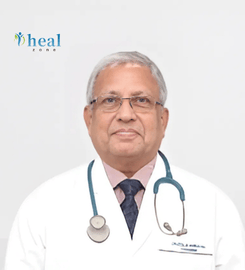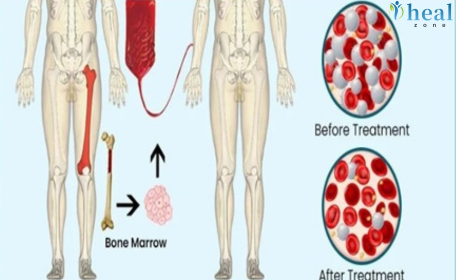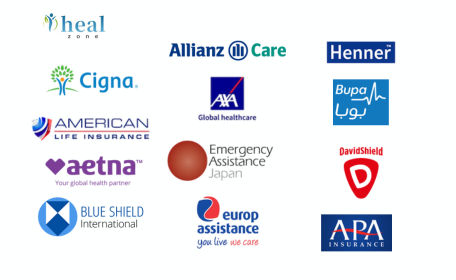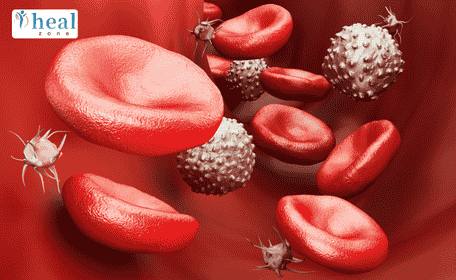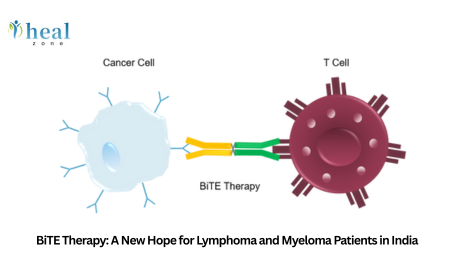What Is Bile Duct Cancer and How Does It Affect the Body?
Bile duct cancer, or cholangiocarcinoma, is a malignant tumor that forms in the bile ducts—thin tubes that transport bile, a digestive fluid, from the liver and gallbladder to the small intestine. This type of cancer can disrupt the flow of bile, leading to a buildup in the liver and potentially causing liver damage.
When bile duct cancer develops, it often causes:
· Jaundice (yellowing of the skin and eyes)
· Abdominal pain
· Unexplained weight loss
· Dark urine and pale stools
· Itching and fatigue
As the tumor grows, it can obstruct the bile ducts and spread to nearby organs. Without timely treatment, the condition may become life-threatening. Early diagnosis and targeted therapy are essential to manage this cancer effectively.
What Are the Types of Bile Duct Cancer?
Bile duct cancer is categorized based on where the cancer originates in the biliary system. The three main types are:
a. Intrahepatic Cholangiocarcinoma
Occurs in the small bile ducts located within the liver. It often mimics liver cancer and may be harder to detect early.
b. Perihilar Cholangiocarcinoma (Klatskin Tumor)
Forms at the junction where the right and left bile ducts exit the liver. This is the most common type and requires complex surgery.
c. Distal Cholangiocarcinoma
- Occurs in the bile ducts closer to the small intestine. It may be treated similarly to pancreatic cancer due to its location.
- Each type affects treatment options and surgical planning. Identifying the type is crucial for formulating a personalized treatment approach.
What Are the Causes and Risk Factors for Bile Duct Cancer?
The exact cause of bile duct cancer isn’t always clear, but several risk factors have been identified:
Major Risk Factors Include:
· Primary sclerosing cholangitis (PSC) – a chronic liver condition
· Chronic liver diseases, such as hepatitis B or C
· Liver fluke infections (common in Southeast Asia)
· Bile duct stones
· Exposure to certain chemicals used in rubber or chemical industries
· Congenital abnormalities of the bile ducts
· Obesity and type 2 diabetes
Age and genetics may also play a role, with most cases occurring in people over 50. Recognizing these risk factors helps in early screening and diagnosis.
How Is Bile Duct Cancer Diagnosed in India?
Diagnosis of bile duct cancer in India is conducted using a combination of imaging tests, blood work, and biopsy techniques to determine the presence and stage of the disease.
Diagnostic Tests Include:
· Ultrasound: Initial imaging to detect bile duct blockage
· CT Scan / MRI: Detailed cross-sectional imaging of the liver and bile ducts
· MRCP (Magnetic Resonance Cholangiopancreatography): Non-invasive bile duct imaging
· ERCP (Endoscopic Retrograde Cholangiopancreatography): Allows tissue sampling (biopsy) and stent placement
· Tumor Marker Blood Tests: CA 19-9 and CEA levels can support diagnosis
· Liver Function Tests: Check the liver’s ability to produce and transport bile
Diagnosis is typically completed within 3–5 days in Indian hospitals, enabling early start of treatment. The multidisciplinary approach ensures accurate staging and customized treatment planning.
What Is the Standard Treatment Protocol for Bile Duct Cancer in India?
India follows an internationally aligned multimodal treatment protocol for bile duct cancer, focusing on tumor removal, disease control, and patient quality of life.
The Standard Protocol Includes:
1. Pre-Treatment Evaluation:
- Full body imaging and staging
- Liver function and tumor marker analysis
- Assessment of operability by a tumor board (oncologist, surgeon, radiologist)
2. Surgical Intervention (if operable):
- Bile duct resection, liver resection, or Whipple procedure depending on tumor location
- Goal: complete tumor removal with negative margins
3. Non-Surgical Therapies:
- Chemotherapy: Often based on gemcitabine and cisplatin
- Radiotherapy: External beam or stereotactic radiotherapy for localized control
- Targeted Therapy: For patients with genetic mutations like FGFR2 or IDH1
4. Palliative Measures (for advanced cases):
- Biliary stenting to relieve jaundice
- Pain management and supportive care
5. Follow-up & Monitoring:
- Imaging and tumor marker tests every 3–6 months for the first two years
- Nutrition and liver support during recovery
- Patients are closely monitored by a multidisciplinary oncology team, and international patients receive regular remote consultations post-discharge.
What Are the Surgical and Non-Surgical Treatment Options Available?
Treatment for bile duct cancer in India involves both curative and palliative approaches, depending on the stage, location, and extent of the cancer. A multidisciplinary team determines the most suitable combination of treatments.
Surgical Options:
· Bile Duct Resection: Removal of the affected section of the bile duct.
· Liver Resection (Hepatectomy): Removal of the cancerous part of the liver along with the bile duct.
· Whipple Procedure (Pancreaticoduodenectomy): Used for distal bile duct cancers; removes parts of the pancreas, small intestine, and bile duct.
· Lymph Node Dissection: Often performed to check for cancer spread.
Non-Surgical Options:
· Chemotherapy: Standard drugs include gemcitabine and cisplatin. May be used before or after surgery, or as a primary treatment for advanced cases.
· Radiotherapy: External Beam Radiation Therapy (EBRT) or Stereotactic Body Radiotherapy (SBRT) to shrink tumors or relieve symptoms.
· Targeted Therapy: For patients with specific mutations (like FGFR2 fusions or IDH1 mutations), drugs such as pemigatinib may be effective.
· Immunotherapy: In selected cases, immune checkpoint inhibitors may be considered.
· Biliary Stenting: Placement of stents to relieve bile duct obstruction and jaundice in inoperable or metastatic cases.
This multimodal approach improves survival rates and quality of life, and is customized to the patient’s condition.
What Treatment Devices or Technologies Are Used in India?
Indian oncology centers are equipped with world-class technology and medical devices, ensuring precision and safety during treatment.
Key Devices and Technologies:
· Advanced Surgical Equipment: Electrocautery, laparoscopic tools, and liver transection devices for minimally invasive and open surgeries.
· Biliary Stents: Used in palliative care to relieve obstruction; available in metal and plastic variants.
· Linear Accelerators (LINACs): Used for delivering precision-guided radiotherapy.
· PET-CT Scanners: For staging and monitoring treatment response.
· Genetic Testing Platforms: For identifying mutations eligible for targeted therapy or clinical trials.
· Endoscopic Ultrasound (EUS) and ERCP: For diagnosis and palliative interventions.
These devices are sourced from top global medical brands and conform to FDA or CE certification, offering international patients peace of mind regarding quality.
What Is the Cost of Bile Duct Cancer Treatment in India?
India is globally recognized for providing cost-effective cancer care. The total cost of bile duct cancer treatment depends on several factors including tumor stage, treatment modality (surgery, chemo, radiation), and hospital infrastructure.
Approximate Cost Breakdown (in USD):
|
Treatment Component |
Estimated Cost (USD) |
|
Specialist Consultation & Diagnosis |
200 – 400 |
|
Imaging (CT, MRI, PET-CT) |
300 – 700 |
|
Biopsy & Histopathology |
150 – 300 |
|
Surgery (Whipple/Liver Resection) |
3,500 – 6,000 |
|
Chemotherapy (6 cycles) |
1,000 – 1,800 |
|
Radiation Therapy (25–30 sessions) |
1,500 – 2,000 |
|
Biliary Stenting (if needed) |
800 – 1,200 |
|
Targeted Therapy (if indicated) |
1,000 – 2,500 per cycle |
|
Hospital Stay & Post-op Care (5–7 days) |
500 – 1,000 |
|
Total Estimated Cost |
6,000 – 10,000 |
Note: Costs may vary based on treatment customization, duration, and use of targeted drugs.
Why Choose India for Bile Duct Cancer Treatment?
India has earned a global reputation for offering comprehensive, affordable, and high-quality cancer care. Here’s why thousands of patients from Africa, the Middle East, Asia, and Europe choose India each year:
Key Advantages:
· Highly Skilled Oncologists & Surgeons trained globally
· Latest Treatment Protocols including surgery, chemo, radiation, and immunotherapy
· Advanced Infrastructure with NABH and JCI-accredited hospitals
· English-speaking staff and 24/7 international patient helpdesks
· Minimal Waiting Times for consultations, imaging, and surgery
· Cost-effective Treatment Packages with no compromise on quality
Additionally, India offers a compassionate approach to care, with holistic healing services such as physiotherapy, dietary support, and palliative care for advanced-stage patients.
Why Choose Healzone for End-to-End Medical Tourism Support?
Healzone is a trusted medical tourism facilitator that helps international patients access high-quality and affordable cancer care in India. From the first inquiry to post-treatment follow-up, Healzone offers personalized, transparent, and comprehensive support.
Key Services by Healzone:
· Free Treatment Opinions: Share your reports and receive expert feedback from India’s top oncologists before you travel.
· Visa & Travel Assistance: Healzone provides medical visa invitation letters, travel guidance, and embassy coordination.
· Airport Pickup & Interpreter Support: Dedicated coordinators ensure smooth arrival, transport, and multilingual assistance throughout your stay.
· Priority Hospital Appointments: Direct admission with minimal waiting times for diagnostics, surgery, or therapy.
· Affordable Treatment Packages: Transparent cost estimates without hidden charges—ensuring peace of mind for international patients.
· Accommodation & Recovery Assistance: Help with finding comfortable lodging close to hospitals and guidance for recovery planning.
· Post-Treatment Coordination: Healzone assists in scheduling follow-ups via video consultation and sharing progress reports remotely.
With Healzone, international patients receive end-to-end care and compassionate support, making their cancer treatment journey in India hassle-free and successful.
What Is the Recovery Timeline and Follow-up Care for Bile Duct Cancer Patients?
The recovery journey varies depending on the treatment modality (surgery, chemotherapy, or both) and the stage of the cancer.
Post-Surgical Recovery:
· Hospital Stay: 5–10 days depending on procedure type (e.g., Whipple or liver resection)
· Initial Recovery: 3–4 weeks of rest with restricted activity
· Dietary Adjustments: Low-fat, high-protein diet is recommended during recovery
· Pain Management & Wound Care: Prescribed medications and hygiene protocols to avoid infection
Chemotherapy/Radiation Recovery:
· Mild to Moderate Fatigue is common
· Blood Count Monitoring after each chemo cycle
· Radiation Side Effects (if any) are managed through hydration and supportive care
Long-Term Follow-up:
· Regular Imaging (CT/PET scans every 3–6 months)
· Tumor Marker Monitoring
· Nutritional Counselling & Liver Health Management
Early post-operative care and structured follow-up help improve outcomes and ensure prompt detection of recurrence, if any.
What Are the Success Rates and Prognosis After Treatment in India?
The success rate for bile duct cancer depends on the stage at diagnosis, location of the tumor, and the overall health of the patient.
General Outcomes:
· Early-stage cancers (especially intrahepatic or resectable perihilar tumors) have 5-year survival rates of 30–50%.
· Advanced-stage cancers, where surgery isn’t possible, have a lower survival rate, but life can be prolonged significantly with chemotherapy, radiation, and supportive care.
· Palliative procedures (like stenting and symptom control) offer improved quality of life in late-stage disease.
India’s cancer centers follow evidence-based protocols that align with NCCN and ESMO guidelines, offering internationally comparable outcomes.
How Safe Is It for Foreign Nationals to Travel to India for Cancer Treatment?
India is one of the safest and most reliable destinations for medical tourism. International patients benefit from:
Safety & Quality Highlights:
· JCI and NABH-accredited hospitals
· Strict infection control protocols
· Dedicated international patient departments
· Secure transportation and concierge services
· Availability of interpreters and multilingual care teams
Moreover, Healzone ensures 24/7 assistance, from the moment you arrive until you fly back, and even after that through virtual follow-ups.
How to Plan Your Medical Trip to India for Bile Duct Cancer Treatment?
Planning your cancer care journey with Healzone is simple and patient-friendly. Here's a step-by-step guide:
Step-by-Step Medical Travel Plan:
1. Share Medical Records: Send your scans and reports via email/WhatsApp to Healzone.
2. Get Treatment Plan & Estimate: Receive expert opinion and transparent cost breakdown.
3. Visa Application Support: Get help with medical visa letter and embassy processing.
4. Book Travel & Flights: Healzone helps you find affordable options.
5. Airport Pickup & Admission: Healzone ensures a smooth transfer from airport to hospital.
6. Diagnosis & Treatment: Begin your treatment as per plan with priority admission.
7. Post-Treatment Support: Receive care instructions, prescriptions, and follow-up schedule.
Patients are advised to plan for a stay of 2–4 weeks, depending on treatment needs, with all arrangements coordinated by Healzone.



